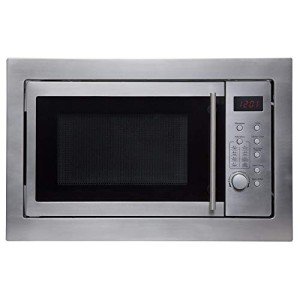A Built in Microwave Oven Combo Offers Convenience and Versatility
A built-in microwave oven combo gives you the best of both worlds by making your wall oven and microwave into one appliance. They can help you save counter space and give your kitchen an elegant look.
These models are equipped with powerful broilers that cook food evenly. Their microwaves also allow food to be cooked quickly. They also have a wide variety of cooking options to cook different foods.
Size
Combining the convenience of a microwave oven with the flexibility of wall ovens and a built-in microwave and wall oven combination is an efficient solution for kitchens with a variety of styles. Explore our range of combination wall ovens and microwaves to find the ideal one for your home. Be sure to read the cutout specifications and the installation guide for the model you select to ensure it works in your space. Our microwave & wall oven combos include both wall oven and microwave models that come in a variety of colors, styles and finishes that will complement any style. Look for features such as easy and efficient controls and a power cook function and a built-in self-cleaning feature to cut down on time.
Convenience
A built-in microwave oven combo will free up counter space and give your kitchen a more sleek appearance. It can be used to heat leftovers, frozen food, and packaged food items. It also eliminates the requirement for a separate countertop appliance or large wall ovens that are stand-alone. If you want to upgrade your home without the need for major changes, a combination microwave oven is a great option.
There are microwave ovens that come in a variety of designs to fit your kitchen decor. Certain microwave oven combos come with doors that swing open from right to left and others have drop-down designs that open the same way as traditional ovens. There is also microwave ovens that open inside a drawer, like cabinets. The microwave drawers can be easily reached and are great for small space.
Combination microwaves also come with various features that assist in making meal preparation easier and more convenient. For instance, some models have a sensor steam cycle that automatically adjusts the time and temperature of your food to ensure you receive perfect steaming of your fish and vegetables. Other features include the broil element which allows you to quickly melt cheese and cook your favorite dish. please click the next site (tm), meanwhile, can cook, grill, and crisp food items.
Think about how often you'll use each feature when choosing the microwave oven combination. If you'll be using the oven component of your combination more often than the microwave, you might be better off using a double wall oven instead. A combo oven has less capacity than an oven that is a standalone unit.

After you've chosen the right microwave and oven combo for your needs, it's time to think about how you will install it. Over-the-range models are mounted over your cooktop or stove and connect to an electrical outlet, while built-in microwaves are inserted directly into cabinets or walls of your kitchen. Some models even have trim kits that let you seamlessly integrate your new microwave into your kitchen cabinets.
Energy Efficiency
Built-in microwave oven combos are a great option for those who have smaller kitchens in their home or apartment. They can save on cabinet space that would otherwise be taken up by two separate appliances, and they also can help reduce energy usage. They generally provide an efficient cooking method than traditional wall ovens, as they tend to use less energy. In addition, they can be used to cook both warm and hot dishes, reducing the need for additional appliances, such as toasters or warming plates.
When evaluating possible amendments to energy conservation standards, DOE conducts several analyses which include assessment of technology and market screening analysis, engineering analysis and a national impact analysis (NIA). In this SNOPR, DOE will use its existing engineering analysis on microwave ovens to determine the level of efficiency improvements are technologically feasible for this product type.
In the engineering analysis, DOE will compare the design parameters of a microwave to a set of energy performance goals. The engineering analysis will then determine the maximum improvement in energy efficiency that is technologically feasible based on the most advanced microprocessor-controlled model available on the market or in working prototypes, or the maximum reduction in energy consumption that is technically achievable with the current technologies available for this product class.
As part of the NIA, DOE will evaluate the effects on consumers for every product category including lifecycle cost savings as well as simple payback period ("PBP"). DOE will utilize the Government Regulatory Impact Model, with an adaptation for microwavable ovens, to calculate the industry net present value (NPV).
The impact of manufacturers will be assessed also, and DOE will employ an updated version of its Industry Cash Flow model that has been modified for this type of product to estimate manufacturing NPV. Finally, DOE will consider the potential impacts on small business manufacturers and other subgroups of manufacturers to identify any that may be affected in a different way by these proposals.
DOE will also consider whether the test procedure for microwave ovens needs to be updated in order to include active mode power consumption and an integrated energy use measurement. At present, the tests only provide standby mode power usage.
Design
Wall ovens are based on the circulation of hot air evenly while microwaves make use of waves to cause the water molecules in food to vibrate and produce heat. Combination wall units combine these two appliances into a single unit, reducing space in the kitchen while giving a modern, sleek look. You should carefully consider your budget and goals before purchasing a combination wall oven. Several of the combination wall ovens in our ratings have issues with performance or design.
